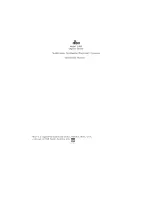
Reading the
Menwry Layout Diagram
Complete descriptions of the memory types, listed below, are provided earlier in this
guide. Notice that these memory types make up the other main sections of the Memory
Layout diagram.
• Fractional Scaling memory
• Voice memory
• Performance memory
• System Setup memory
• Micro Tuning memory
• Current Play/Edit memory
• Compare/Recall memory
• Initialized memory
In the Memory Layout diagram, the dark vertical arrows indicate how "blocks" of
memory are moved between media types.
For example, look at the Fractional Scaling Memory column. The dark arrow indicates
that Fractional Scaling data for
64
voices may be moved, as a block of memory, between
a disk (in the FD) and a RAM cartridge. The arrow is double-headed indicating that this
block of
data
may be moved in either direction (from cartridge to disk as well as disk to
cartridge).
Next, look at the Disk row. Notice the box around Voice, Performance, and System Setup
memories. This means that these memory areas are moved together. You may, for
example, move this block of memory in either direction between a disk and internal
memory. This block of memory always contains the following data:
•
64
voices
•
32
performances
•
2
user microtuning scales
•System setup
data
(at your option)
Now, look at the Internal Memory row. The box in the Micro Tuning Memory column
refers to the user micro tuning scales
1
and
2.
These are connected to and therefore are
moved along with the Voice, Performance and the optional System Setup memories.
The two small dark arrows indicate that this same block of memory can be moved
between disk and cartridge. It may also be moved between Cartridge and Internal
Memory.
The last dark arrow on the right of the page illustrates that a block of
63
Microtuning
scales may be moved between disk and cartridge.
- 13 -
Summary of Contents for DX7 II FD
Page 4: ......
Page 5: ...Introduction 1...
Page 8: ...4...
Page 9: ...Overview 5...
Page 14: ...10...
Page 15: ...Memory Layout 11...
Page 20: ...16...
Page 21: ...Types of Media 17...
Page 26: ...22...
Page 27: ...lnternal elllory...
Page 29: ...Cartridge Functions 25...
Page 35: ...j Disk Functions 31...
Page 46: ...42...
Page 47: ...Utilities 43...
Page 53: ...Data Charts 49...
Page 59: ......
Page 60: ......
















































